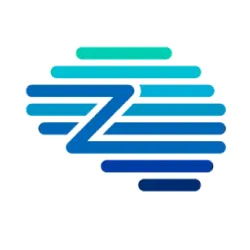TL;DR
- Procurement operating models (POMs) are evolving rapidly, with 83% of organizations changing their model in the past five years.
- Center-led models strike a balance between centralized strategy and decentralized execution, enabling flexibility and efficiency.
- Changing the procurement model itself can drive savings and innovation—even more than the specific model chosen.
- Savings potential is consistent across models—decentralized, hybrid, and center-led models yield 6% savings, centralized yields 5%.
- Organizations must align their procurement strategy with business goals and adopt flexible, tech-enabled models for long-term impact.
What Are Procurement Operating Models?
A procurement operating model represents the framework that integrates people, processes, and technology to achieve desired outcomes. It defines how an organization delivers procurement value by orchestrating its resources, workflows, and tools in alignment with its strategic goals. Unlike a simple organizational structure, a procurement operating model emphasizes the interconnected roles of human capabilities, process excellence, and technological enablement.
Read more: The Modern Procurement Operating Model: Structure for Success
Procurement Operating Models: Strategic Foundation for Savings
Procurement has evolved from a transactional role—once seen as merely “the department that buys stuff”—into a strategic function with board-level impact. In today’s competitive and cost-pressured environment, the procurement operating model a company adopts—centralized, decentralized, or center-led—has a direct bearing on its ability to deliver value.
Leadership is increasingly scrutinizing procurement’s role in cost reduction and efficiency, particularly in a globalized economy where supply chain complexity is the norm. The procurement operating model (POM) plays a pivotal role in defining procurement maturity and strategic value.
Read more: Understanding Hybrid Procurement and How to Implement It
The way procurement operates has an impact on the organizational savings and objectives at large. Is your organization following a centralized approach? Or, being decentralized is the way it works? Or, is it in transition phase? What is the impact of the procurement model your organization follows?
A research report by KPMG and Procurement Leaders, “High Impact Procurement Operating Models – A Survey of Global CPOs” tries to identify the linkages between centralized, decentralized, center-led approaches, and savings to find the “best” procurement model.
As per the report, 83% of organizations have changed their Procurement Operating Model (POM) within the last five years. Most companies start from a legacy of decentralized structures, which a nascent procurement function seeks to consolidate in the center. This seems to give way to a second wave of decentralizing, leading to center-led models. As organizations cycle through different POMs, they do not lose the benefits of past models.
Why Procurement Operating Models Matter for U.S. Businesses
A procurement operating model isn’t just an internal framework—it directly impacts compliance, cost control, and competitiveness in the U.S. market. With increasing supply chain disruptions, inflationary pressures, and state-level regulatory complexity, the choice of operating model determines how quickly organizations can adapt.
- Healthcare and Pharma: Center-led models ensure strict compliance with FDA and HIPAA requirements.
- Government Contracting: Centralized models support audit readiness and policy adherence.
- Manufacturing & Retail: Hybrid models improve supplier diversity and resilience across states.
Takeaway: The “right” procurement operating model varies, but its role as a strategic lever for savings and compliance is universal.
Centralized vs. Decentralized vs. Center-Led Procurement Operating Models
Decentralized Procurement Operating Model
- Activities are distributed across departments.
- Advantages: Flexibility, localized decision-making, strong local supplier relationships.
- Disadvantages: Lack of governance, inconsistent standards, reduced spend visibility.
Centralized Procurement Operating Model
- All procurement decisions managed by a central team.
- Advantages: Spend control, consistent policies, better supplier negotiations.
- Disadvantages: Reduced agility, stakeholder friction, slower local responsiveness.
Center-Led Procurement Operating Model
- Strategic activities centralized, execution decentralized.
- Advantages: Combines governance with responsiveness, ideal for mature organizations.
- Disadvantages: Requires strong change management and clear role definitions.

Here’s a look at the procurement journey of most of the organizations.
A single operating model does add value to the business. However, changing operating models deliver savings and sustained benefits. The levels of reported savings do not vary greatly between different procurement models. On an average, Decentralized, Center-led and Hybrid models generate a savings of 6%, while Centralized generates 5% savings.
The report says,
“POMs do not by themselves deliver incremental savings. There is no single answer for an organization in finding its procurement operating model. Changing the POM can itself generate additional benefits and possibilities of savings delivered in a new environment. The change, in and of itself, can produce wider benefits.”
With the evolution of the organization, the procurement model evolves. At which stage your organization is in and the operating model it follows will impact the savings and business goals.
How Procurement Operating Models Evolve Over Time
Organizations typically start with decentralized procurement in their early stages. As they grow, they face governance and efficiency challenges that push them toward centralization. Over time, this can lead to a center-led procurement operating model that balances strategic oversight with operational flexibility.
Key drivers of change include regulatory pressures, audit findings, and new leadership aiming for more strategic value. Changing the procurement operating model itself can unlock benefits by resetting procurement’s alignment with enterprise goals.
Read more: 6 Key Procurement Organizational Structures You Can Consider To Optimize
Procurement Operating Models Comparison at a Glance
| Model | Best For | Advantages | Disadvantages | Avg. Savings Potential |
|---|---|---|---|---|
| Decentralized | Young orgs, high local autonomy | Flexibility, strong local supplier ties | Lack of governance, reduced visibility | ~6% |
| Centralized | Regulated industries, global suppliers | Strong spend control, consistent policies | Slower local responsiveness | ~5% |
| Center-Led / Hybrid | Mature, multi-unit enterprises | Balances governance with agility | Requires change management, clarity of roles | ~6% |
This comparison helps leaders quickly assess which model aligns with growth stage, regulatory needs, and savings goals.
Key Factors When Choosing Your Procurement Operating Model
When evaluating or evolving your procurement operating model, consider:
- Business Goals – Cost reduction, compliance, supplier innovation, or agility?
- Industry Regulations – U.S. compliance demands may favor centralization in finance/government sectors.
- Technology Readiness – Can your systems support visibility, automation, and collaboration?
- Organizational Culture – Is decision-making traditionally centralized, or do business units value autonomy?
- Leadership Priorities – New leadership often sparks operating model shifts.
Evolving with the Right Procurement Operating Model
In today’s dynamic business landscape, no procurement operating model remains optimal forever. From decentralized beginnings to centralized oversight and ultimately to center-led agility, each phase serves a unique purpose in procurement’s maturity journey.
The real value lies in knowing when and how to evolve. A center-led procurement operating model often emerges as the most adaptive, aligning strategy with execution while minimizing friction. By listening to stakeholders, leveraging intelligent technologies like guided buying and generative AI, and maintaining flexibility, procurement can transform from a cost center to a strategic enabler.
Zycus offers an extensive suite of solutions—including Merlin Intake Management, Strategic Sourcing, eProcurement, Contract Management, and Supplier Management—that can support every phase of your procurement operating model evolution. These tools provide AI-powered automation, seamless collaboration, and actionable insights to align procurement functions with strategic business goals.
Ultimately, the right procurement operating model is one that empowers procurement to be responsive, collaborative, and strategically aligned—delivering not only savings but sustained business value.
FAQs
Q1. What is a procurement operating model?
It’s the framework that integrates people, processes, and technology to deliver procurement value in alignment with business goals.
Q2. Which procurement operating model delivers the most savings?
Savings potential is relatively consistent across decentralized, hybrid, and center-led models (~6%), while centralized delivers ~5%. The act of changing models often drives additional savings.
Q3. How do procurement operating models evolve?
Most organizations start decentralized, then centralize for control, and eventually shift to a center-led model for balance and flexibility.
Q4. What factors should guide procurement operating model selection?
Business maturity, regulatory compliance, leadership vision, and technology adoption.
Q5. Why are center-led models becoming popular?
They strike a balance between governance and agility—ideal for organizations operating across multiple states or regions
Related Read:
- Blog – Challenges of Conversational AI in Procurement and How CPOs Can Overcome Them
- Blog – 5 Big Ideas for CPOs in Europe to Develop Procurement Strategies for 2023
- Blog – CPO’s Approach to Manage Meetings – Make the Team don 6 Thinking Hats
- Blog – A CPO’s Ultimate Guide to Selecting the Right Source-to-Pay System
- Cognitive eProcurement Solution That Drives Smarter Cost-Savings for Global Businesses
- Research Report – CPO Game Changer Series Volume 1: Early Engagement
- Download White paper – 5 Ways the Oil and Gas Industry can Boost Savings and Profits








































